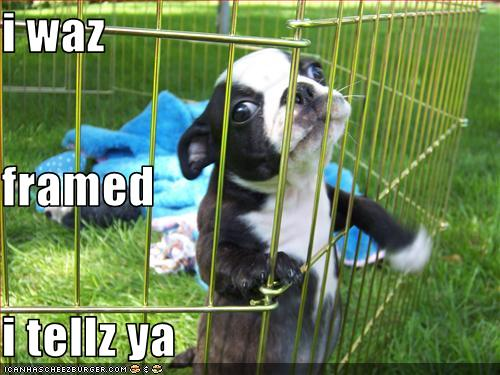BostonTrading.co update May-June 2022
Rogue Traders, rug pulls and ratbags

So many LUNAtics… There was big news this month as the (alleged) stablecoin Terra “depegged”; going from its (supposedly) fixed price of US$1 down to pennies, and Terra’s sister-coin LUNA was decimated; dropping from over $100 down to a fraction of a cent. This depegging was a massive shock to everyone in crypto, and sent shockwaves through the system. Those who have been in crypto for a while have seen many coins rocket up to hundreds or thousands of dollars and then plunge to zero, but these were often speculative or memecoins, so their day of reckoning was usually not a big surprise. The death of a coin that was supposed to be stable, and always pegged 1:1 to the USD was a very rude awakening to all in crypto. For a quick overview that may make you feel better about your bad decisions, please read the brief missive that we published on HackerNoon in the days after the LUNA crash. As a bonus, you can feel a sense of schadenfreude when you see that large sophisticated investors lost millions of dollars, and one hedge fund manager will forever regret his large LUNA tattoo… It is no secret that Bostoncoin had a small exposure to LUNA, some 2.5% of the Bostoncoin portfolio was affected by the precipitous drop in price, however, 97.5% of the Bostoncoin portfolio was safe. (DARTcoin and POLLYcoin did not hold any LUNA or Terra). This is an admission that we too, failed to see the limitations of an algorithmic stable coin, but also, we are proud that we did not lose as much as many others.

So, what happened? Much has been written on the LUNA aftermath, and with the benefit of hindsight, many armchair experts can claim they saw the disaster coming. However, there are thousands of expert investors, including many exchanges, analysts and fund managers who did not see the red flags. Why not? The majority of stablecoins are centralised, even those that claim they are not. Stablecoins such as BUSD and USDT are controlled by Binance and Tether respectively. The organisations control the 1:1 pegging with the US dollar, and can mint more coins or burn coins as they see fit, to control pricing. Terra was a brave experiment in allowing the market to control the price, using a complex algorithm, which we will try to explain simply (let us know how we do! If you don’t understand this next part, we will have to try harder!) Imagine a see-saw or a set of old-time scales with 1000 one-dollar bills (Terra) on one side, and 1000 coins (LUNA) on the other. For the moment, it is perfectly balanced. Then, someone wants to buy one of the $1 bills and take it away. To balance the scales, we have to take away (‘burn’) one coin from the other side. This algorithm is how LUNA became worth a little more, as there were less coins available (scarcity). Then imagine that someone wanted to sell a few $1 bills and adds $100 to the dollar side of the scales. We would need to add (‘mint’) 100 more coins to the other side. This is how LUNA became less valuable, as there were more coins available. For a long time, this algorithm ran itself perfectly: every time someone bought the $1 Terra (UST) stablecoin, more LUNA was automatically burned, leading to LUNA scarcity and an increased LUNA price. Every time someone sold the $1 stablecoin, more LUNA was minted or created, the LUNA price went down, and the scales balanced perfectly. The market controlled the supply and demand, the algorithm controlled the price, and everyone was happy… except for one or two (alleged) opportunists who wanted to spoil the party for everyone. Someone with a lot of time on their hands discovered that the algorithm had a limitation. If you knew the time between taking $1 from one side and the removal of a coin from the other side was 1/10th of a second, you could deliberately move faster than the algorithm, and make the system crash. Someone with very deep pockets (allegedly) borrowed hundreds of billions of dollars in early May. It seems that they then bought Bitcoin, and immediately sold it, causing the BTC price to go down. The nefarious operator(s) then bought hundreds of billions worth of the Terra (UST) stablecoin, and then sold it in vast volumes and at speeds greater than the algorithm could handle. This massive selloff briefly made the scales unbalanced. Once the supposedly $1 stablecoin hit $0.80, panic set in. Many investors started to sell out, driving the UST price even lower… then lower and lower. Panic spread and people started to exit the system, selling LUNA for a loss also. Investors lost several hundred million dollars, whilst the instigator(s) (allegedly) made out like bandits. Explaining a “short” market play is complex, so feel free to do your own research on how George Soros broke the Bank of England, causing investors to lose $3-4 billion but made $1 billion for himself. You could also watch “The Big Short”, a movie about how a handful of people made billions profiting from the misery of the 2008 Global Financial Crisis (GFC). The movie is far more entertaining and informative than reading an economic paper and it is highly recommended that you watch it at least once or twice. The bottom line is that crypto markets are as yet unregulated. What the (alleged) perpetrators of this scheme did may have been highly immoral, but it was not technically illegal. If this scheme had played out in the stock market, there may have been criminal charges or some prison sentences handed out, but as there are no laws in crypto (yet), it is always a case of “caveat emptor” or “buyer beware”. We at BostonTrading.co were lucky to limit our losses due to great diversification. Some of our peers were not so lucky. It may take them a few years to recover from their losses. Meanwhile, we continue to research, hold and rebalance in line with our risk management mandate, in order to serve you safely and securely.

Meanwhile, in other markets. We are not going to sugar-coat this: it has been a ‘ruff’ few weeks in crypto markets, as well as in the stock market. Many prices have gone down, sometimes significantly. If you are new to markets, it has been very uncomfortable, but if you have been in for a few years, you know it is OK. Our tweet from May 12 highlighted the fact that Netflix stock had dropped by 75%, Zoom was down 79% and RobinHood was down almost 90% from previous peaks. Our article in HackerNoon showed that over 800 stocks had dropped at the same time, so this was clearly not a “crypto crash” Despite dropping around 30%, Bitcoin has still risen over 1400% from where it was five years ago, whereas Netflix is around the same price as it was in 2017, Zoom is back to its pre-pandemic levels from 2020 and RobinHood is still down 70% from its first issue. Focusing on a year-by-year chart, good crypto is clearly beating good stocks over the longer term. We have little doubt that Netflix, RobinHood and Zoom may reach new highs in the near future, and that the good cryptocurrencies will bounce back higher, even as the memecoins die out. The fallout from LUNA may continue for a while, and may even speed up the introduction of crypto legislation, so that nefarious operators can no longer manipulate the markets for their own gain. As mentioned in prior newsletters, we welcome the introduction of “appropriate” crypto regulation: enough to stymie the ratbags and rug-pullers, but not so much red-tape as to stifle innovation. It will be a fine balancing act to limit bad operators whilst allowing the good guys to thrive. We are cautiously optimistic that it will work out well for the entire crypto industry.

What else is happening? As we move into what could be the next “crypto winter”, we see that price stability has improved from the previous panics of 2017-2018. This is due to increased adoption from institutions and even nations. Joining El Salvador, the Central African Republic (CAR) has adopted Bitcoin as a national currency. In the previous crypto winter, Bitcoin dropped from its 2017 peak of US $20 000 to under $4000 and languished for almost three years before returning to its peak. Despite crashes in crypto and the stockmarket this year, Bitcoin is down only around 50% rather than 75%, and we see a lot of support at current price levels. Not only are the governments in CAR and El Salvador buying up big, but also major players in the traditional financial field, such as hedge fund managers. This can be a double-edged sword: fund managers bring billions of dollars in new capital, but institutional adoption also brings institutional behaviour. This may include market manipulation, leveraged trading and other sophisticated methods that benefit Wall Street whilst punishing Main Street. We advise caution, education and diversification. Even in new markets, the old rules apply.

How did we go this month?
In a period when 800+ stocks have dropped, one of the top ten stablecoins has proved to be ridiculously unstable, and crypto prices have almost halved across the board, sometimes all you can do is hang in there. The POLLYcoin portfolio is unaffected by volatility and continues to be priced at $1 per unit and pay 5% income. A great “term deposit” earner for those who are investing for the shorter-term, or for those seeking sustained income without growth. DARTcoin was down across the board except for TRON up 27%nnThe flagship Bostoncoin fund had some wins amongst all the downturns, including an 8% gain on Binance and 33% gains on our stock in the Coinstash crypto exchange. The small wins hardly offset the major losses, but we have hope for better returns going forward. As interest rates rise, fiat stimulus winds back and the economy steels itself against high inflation and ongoing supply chain issues, there is a high likelihood of negative interest rates and negative earnings on most investments. This could lead to the declaration of a technical recession, and a possible flight from the traditional safe haven of bonds. When funds flow from stocks and bonds, where will it end up? Will funds flow to traditional markets such as precious metals, or into scarce commodities such as Bitcoin and Ethereum? Whilst we wait to see, we continue to seek opportunities, buy the dips and stake for earning.
As at May 30 2022
BOS NAV 96.7300232
BOS price 106.403025
MOM (-36.49%)
YOY (-36.94%)
Two years 349.1%
Three years 298.38%
Four years 177.94%
DART NAV 138.0554
DART price 151.8609
See you next month
JB
PS — thanks for taking the time to read to the end. Would you please spare a minute to rate our service on TrustPilot? For every review we receive in June 2022 we will give clean drinking water to a family in Ethiopia, so you get to feel good as well as making a difference in the lives of others. See our past giving here
